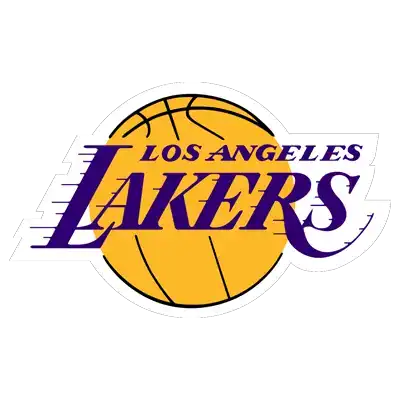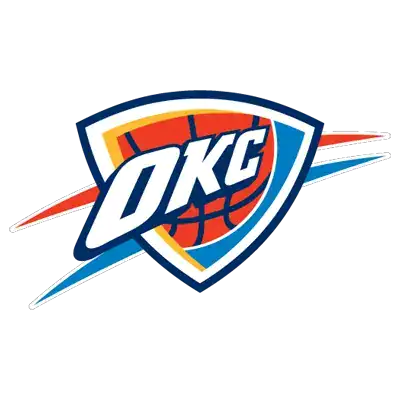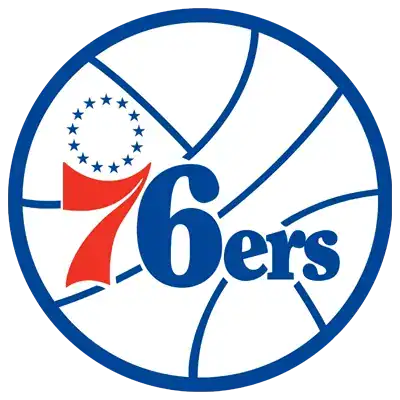Troy vs. Old Dominion Prediction & Betting Picks (November, 13th, 2025)
There is just one FBS college football game on the schedule on Thursday night, and it’s a big one, as the Troy Trojans visit the Old Dominion Monarchs as massive 11.5-point underdogs.
Old Dominion has been impressive on offense all year and presently sits third in the SBC East, with little hope of catching 8-1 James Madison. Still, a bowl game could be in their future, and if they do want to reach the Sun Belt Conference championship, they know they have to win out.
That plight starts on Thursday, as they’ll be huge -410 betting favorites in the first documented showdown with Troy.
The Trojans have also been good in 2025, as they enter with an identical 6-3 record and have done well (4-1) in the SBC West. There’s a lot on the line for them, as well, as they are just one game back behind Southern Miss for first place.
Is this a game where Old Dominion dominates at home, or is the spread too rich? I’ll go over the latest odds and key matchups before handing out my best bets and final Troy vs. Old Dominion prediction.
Game Basics & Context
- Matchup: Troy Trojans (6-3) vs. Old Dominion Monarchs (6-3)
- Date & Time: Thursday, November 13th, with kickoff at 6:30 pm CT (7:30 pm ET)
- Venue: Foreman Field in Norfolk, VA
- How to Watch: The game will be broadcast on ESPN.
Team Record
- Troy is 6-3, 4-1 in the SBC.
- Old Dominion is 6-3, 3-2 in the SBC.
Betting Odds
Check out the most current Troy vs. Old Dominion odds, per DraftKings:
| Team | Spread | Moneyline | Total |
|---|---|---|---|
Troy | +10.5 (-112) | +295 | O 52.5 (-110) |
Old Dominion | -10.5 (-108) | -375 | U 52.5 (-110) |
Rivalry & Venue Context
A rivalry could start brewing after Thursday, but this will actually be the first documented clash between these two teams.
Old Dominion has only been a member of the Sun Belt Conference since 2021, while they’ve only been an official FBS team since 2013.
This game will be played at Old Dominion’s home stadium – Foreman Field – where the Monarchs are undefeated (4-0) so far this season.
Why This Game Matters
This is a huge game for both teams, as bowl game hopes are on the line, as is a shot at the Sun Belt title game. Both teams are technically still alive on their respective sides of the conference, too.
Old Dominion’s path to the SBC East is murky at best, so they need to win this game (and probably the rest on their schedule) to guarantee a bowl game.
Troy is just one game back from first place in the SBC West. They also need to keep winning in order to get a bowl game, but they could lose here and still have a shot at winning their side of the conference.
Team Profiles

Troy Trojans
The Trojans are massive underdogs despite looking pretty darn good overall in 2025. They got off to a 1-0 start before dropping tough losses to Clemson and nasty Memphis squad, but they got hot and won five games in a row.
During that hot streak, the Trojans scored 31+ points four times and won a wild 48-41 shootout with Texas State. The level of competition wasn’t insane, but they took care of business switch strong offensive play.
Troy did take a step back in their most recent game (23-10) against a middle-of-the-road Arkansas State team, but they’ll be well rested after a week off from football.
The Trojans don’t really impose their will offensively, but they do put up 25.6 points per game on average and have a respectable passing game. They’re also incredibly well balanced on offense with almost a 50-50 split.
Defensively, Troy is nasty up front with the nation’s 13th-best sack rate, while they are very good in the secondary, ranking 31st against the pass.

Old Dominion Monarchs
The Monarchs admittedly need this game a bit more than Troy does, plus they are at home at night on a short week. Troy’s week off might negate some of that advantage, but Old Dominion is still the understandable favorite.
That said, they are not the easiest favorite to trust, as they got positively smoked in two of their last three games. One of those losses was a 63-27 beatdown by a very good James Madison team, but a 48-24 loss to Marshall isn’t nearly as forgivable.
They did bounce back with a tight 24-21 win over Appalachian State and a convincing 31-6 win over UL Monroe, however.
On the year, the Monarchs are the better offensive team compared to Troy (29.1 points per game), as they are quite explosive (12th in yards per play) and own one of the nation’s most dominant ground games (24th in rushing yards per game).
Stud dual-threat quarterback Colton Joseph does it all for this team, as he enters this huge SBC game with 28 total touchdowns to his name.
Key Matchup Angles
Consider the following key matchups:
- Troy’s RZ offense vs. Old Dominion’s RZ defense: Troy is a balanced offense that can be unpredictable and move the ball decently, while they have a passable red-zone offense as well. But how it fares against an elite Monarchs RZ defense (15th) could be a huge key to this game.
- Old Dominion’s passing game vs. Troy’s secondary: Troy has an elite sack rate (13th) and the nation’s 30th-best pass defense. This could be a problematic matchup for the Monarchs, who run a ton, but still take advantage of the 6th-best yards per pass play rate in the country.
- Turnover Battle: Colton Joseph is a dominant dual-threat quarterback who can definitely take over this game, but he also can be a turnover machine. That might not be ideal against a Troy defense that can be pretty opportunistic with their 1.5 takeaways per game.
Betting Insights & Trends
Troy has been rock solid (6-3) against the spread this year. They’re also undefeated against the spread (3-0) as the road underdog and 4-1 ATS in conference games.
Old Dominion isn’t quite as good (5-4) against the spread, while they are just 2-2 ATS at home and just 3-3 against the spread when favored.
Best Bets & Confidence Levels
Check out my favorite Troy vs. Old Dominion picks:
| Bet | Recommendation | Confidence Level |
|---|---|---|
Troy ATS +10.5 (-112) | Troy is coming off a loss, but they have had over a week to get ready for a huge SBC showdown. Their balanced offense and underrated defense should allow them to keep this one relatively close. | 7/10 |
Prop Play – Colton Joseph Anytime TD (-240) | The pricing jumped on this, but all this guy does is score. He’s coming off a 3-TD effort and has scored on the ground nine times in 2025. The matchup looks fine, too. | 7/10 |
Over 52.5 (-110) | Troy’s pass defense is good, but I don’t think it will completely shut down a good Old Dominion offense. The Monarchs aren’t scary defensively at all, either, so together, we should be looking at a decent amount of points. | 7/10 |
- Primary Pick: Troy ATS +11.5 (-115)
- Secondary Pick: Colton Joseph Anytime TD (-240)
Troy is good enough to come in and give Old Dominion a fight. They don’t wow you offensively, but they have good balance and do a solid job converting in the red zone.
The Trojans also have a strong pass rush that helps them contain opposing passing games. I don’t think it hurts the game total or impacts Colton Joseph’s ability to score on the ground, but it should play into Troy beating this spread.
Troy vs. Old Dominion odds are moving fast — track every line shift and lock in the best numbers before kickoff. Compare spreads now at the top football betting sites.
Risk Factors & What Could Go Wrong
There are no guarantees when betting on sports. Here’s why these Troy vs. Old Dominion bets could fail:
- Home Field Edge: Old Dominion is at home on a short week – a spot they have yet to lose in this year. It’s not that crazy to think they’ll rise up in front of their home fans and get a big win.
- Master of None: Troy is a balanced offense that can finish drives and be unpredictable, but they also aren’t really elite at anything on offense. That could obviously turn into an issue against a superior offensive team like the Monarchs.
- Defense’s Focus: Colton Joseph scoring a rushing TD feels like one of the best Troy vs. Old Dominion picks you can make, but the Trojans could (and should) prioritize neutralizing him as a runner. If they do that, it’s possible Old Dominion has to turn to someone else to punch the ball into the end zone.
Putting Our Pick on the Board: Here’s How It Plays Out
Final Score Prediction: Old Dominion 34, Troy 27
I have the Monarchs staying perfect on their home field and winning this game, but the moneyline is too thick to target. You could bet on them to cover the spread, but it feels awfully rich considering how competitive the Trojans have been in 2025.
Troy had a full week of rest and can’t feel good about how they fared in their last outing. I wonder if that was basically a classic ‘trap’ game, where their focus was on this battle with the Monarchs.
Whatever the case, Troy should give Old Dominion a fight, but neither defense is good enough to be concerned about the Over delivering. As for Colton Joseph, he is just such a huge part of what the Monarchs do that his scoring on the ground feels inevitable, even if we’re not getting the most amazing price.
New York Jets vs. New England Patriots Prediction & Betting Picks (November 13th, 2025)
The New York Jets will look to win their third game in a row in Week 11, where they will be huge +536 underdogs on the road against the rival New England Patriots.
Thursday Night Football features a fun AFC East clash; albeit one that may not be very exciting at all due to the Pats being large 11.5-point favorites. The game also sports a paltry 43.5 total.
Still, New England comes in on fire, as they stand in at 8-2 after winning each of their last seven games. Something has to break in this one, as both teams have winning streaks, but the spread is big enough to cause doubts amongst bettors.
Not sure which way to lean? Join me as I inspect the latest odds, highlight the best bets, and work my way to a Jets vs. Patriots prediction.
Game Info Snapshot
- Date & Location: Thursday, November 13th, 2025 | Kickoff at 7:15 pm ET (Amazon Prime) at Gillette Stadium in Foxborough, MA
- Team records entering the game:
- Jets: 2-7
- Patriots: 8-2
- Odds (from ESPN BET)
- Spread: Jets +13.5 (-110) | Patriots -13.5 (-110)
- Moneyline: Jets (+600) | Patriots (-1000)
- Total: Over 43.5 (EVEN) | Under 43.5 (-120)
This game has a huge point spread, which highlights the talent and productivity gap between the Jets and Patriots. Playing into the spread and moneyline further is New England’s impressive seven-game winning streak, as well as their home field advantage at night on a short week.
A low game total also puts an emphasis on New York’s suspect offense, as well as the mismatch against New England’s defense.
Storylines to Watch
The big storyline for this game is without a doubt the seven-game run for the Pats. New England was a team many felt could rise up the rankings this season, but an 8-2 record is beyond shocking.
Due to the spread and moneyline, it’s likely this winning streak continues. However, AFC East games can be tough to predict, so whether or not the Pats can live up to the spread and extend their winning streak will be the biggest reason people watch this one.
- Jets QB Situation: Ideally bettors know who the Jets will be starting under center before Thursday Night Football kicks off, but head coach Aaron Glenn has kept his cards close to the chest. It’ll be either Justin Fields or Tyrod Taylor under center, but who actually starts is still unknown.
- Maye for MVP: A huge reason for New England’s success and 8-2 run to start the year is the play of second-year quarterback, Drake Maye. Maye has emerged as a realistic NFL MVP contender thanks to 19 passing scores and a 113.9 passer rating. It’s likely he’ll continue his MVP form on TNF.
- TreVeyon’s Breakout: There has been a lot of chatter about how the Pats have used (or not used) stud rookie running back TreVeyon Henderson, but he finally blew up with two long rushing scores last week. If he can continue to shine, he could be in for a huge day against a Jets run defense that has allowed the 11th most yards to RBs.
Team Profiles

New York Jets
The New York Jets have obviously not been great this year, as they sit at the bottom of the AFC East with a poor 2-7 record.
New York has been involved in several close games throughout the season, however, and is starting to turn things around with a two-game winning streak.
- Ground Control: The one thing the Jets do well on offense is pound the rock. Athletic quarterback Justin Fields is an extension of the ground game, as he and Breece Hall team up for the NFL’s 4th best running game. If Fields and Hall can get it going early, the Jets could hang around.
- Stingy Secondary: It’s worth wondering how much longer New York’s season numbers will hold, as they traded away top cover man Sauce Gardner last week. Still, the Jets own the NFL’s 8th-best pass defense. If they can give Drake Maye any kind of trouble, it could go a long way in keeping this game close.
- Automatic Folk: The Jets don’t have a ton of positivity stemming from a shaky offense, but when they get in range, they can hang their hat on kicker Nick Folk being Mr. Reliable. Folk has converted all 19 of his field goal tries on the year and could be the difference if the Jets keep this one tight down the stretch.

New England Patriots
The Pats have had a magical 2025 campaign. They got off to a slow start by losing to the Las Vegas Raiders back in week one, but bounced back in a huge way. Their hot run includes an upset over the rival Buffalo Bills, while their two losses have both come by just one score.
Drake Maye leads a talented and balanced offense that has shown it can roll with anyone in the league – a unit that has been so good it’s helped mask a pedestrian defense.
- Dynamite: The Pats offer a very explosive offense, as they come in ranking 2nd in yards per pass play (8.9). They haven’t enjoyed the same success on the ground, but judging by his play in week 10, rookie TreVeyon Henderson could fix that moving forward.
- Hyper Efficient: A big reason for Drake Maye’s success is his accuracy and overall efficiency. Maye has done an excellent job taking care of the football, while he heads the league’s second-most-accurate passing game. Neither appears to be at great risk of being disrupted in this week’s matchup.
- Stiff Front: New England’s overall defense doesn’t blow you away, but they definitely know how to stop the run. They’ll come into Thursday Night Football, allowing just 79.2 rushing yards per game – tops in the league.
Key Matchups & Angles
Take a look at the key Jets vs. Patriots matchups for TNF:
- Patriots run defense vs. Jets rush offense: New York’s best path to success is finding a way to unleash Justin Fields as a runner or to get Breece Hall going. That feels unlikely against New England’s nasty front seven, which ranks top-5 in every meaningful run defense metric.
- Patriots passing offense vs. Jets secondary: While the Jets don’t have a legit hope against New England’s run defense, their secondary’s prospects look just as bleak as they try to slow down Drake Maye. Trading away stud corner Sauce Gardner didn’t help.
- Jets pass rush vs. Patriots o-line: The only realistic matchup that the Jets could possibly exploit is New England’s pass protection, which has allowed the third worst sack rate in football. Getting timely sacks could disrupt Maye’s flow and stall drives, giving the Jets the advantage they desperately need.
Betting Trends & Odds Context
Check out the latest Jets vs. Patriots odds, per ESPN BET:
| Team | Spread | Moneyline | Total |
|---|---|---|---|
Jets | +13.5 (-110) | +600 | Over 43.5 (EVEN) |
Patriots | -13.5 (-110) | -1000 | Under 43.5 (-120) |
Take a look at some key betting trends for this TNF tilt:
- Public Betting: As you’d expect given the Jets vs. Patriots lines, most of the betting action favors New England. So far 61% of the bets are on the Pats, while 65% of the money is backing them as well.
- Matchup History: Playing in the same division, these two teams have battled quite a bit, facing off 132 total times. The Pats hold a 75-56-1 advantage in the series. They won the most recent meeting (25-22) and are 16-2 over the last 18 clashes.
- ATS Data: New York doesn’t have a good record, but they’ve been pretty competitive on the year, going 5-4 against the spread. They’re also 5-3 ATS as the underdog and 2-1 ATS as the road dog. New England has gone 7-3 against the spread overall and are 2-0 ATS in division showdowns.
Best Bets for Jets vs. Patriots
Pick 1: Jets ATS +13.5 ( -110) – 7/10 Confidence
Why We Like It
The Jets aren’t a very good or reliable team, but they also refuse to quit. Aaron Glenn still has them believing with wins in their last two games, while this is simply a really big spread for a divisional clash.
We saw the Raiders beat a big spread last TNF. Night games on short weeks can go either way, while the Pats have barely edged out some pretty weak teams this year.
Risks/What to Watch
New York isn’t good, and it’s a road game against a hot team in a primetime setting. If the Jets don’t get off to a strong start, this one could unravel in a hurry.
Pick 2: Prop Play – Drake Maye Over 250+ Pass Yards (+112) – 7/10 Confidence
Why We Like It
New England has one of the better passing games in the league, and Drake Maye will look to continue to make his case for an MVP win. New York also traded away two key defensive players recently, likely working against the idea of this being a remotely troubling matchup for the Pats.
Risks/What to Watch
New York’s defensive strength is their pass defense, while it’s possible the Patriots could build an early lead and simply not need to throw the ball a lot.
Pick 3: Prop Play – Breece Hall Over 2+ Catches (-250) – 7/10 Confidence
Why We Like It
The Patriots allow the most receptions to running backs this year, while the Jets are likely to be trailing and will need to throw a lot. That’s logic that tracks, as Hall has recorded at least two catches in seven different games.
Risks/What to Watch
It’s always possible the Jets play with a lead and don’t need to throw much, or that New England goes out of their way to neutralize Hall’s touches and take him out of the game entirely.
New York Jets vs. New England Patriots odds can shift quickly — follow every line move and grab the best value before kickoff at our best football betting sites.
Final Verdict: Patriots Roll to a 9-2 Start
Final Score Prediction: Patriots 20, Jets 10
The Patriots have just about everything working in their favor here. It’s possible New England overlooks their rivals in this spot, of course, especially since they’ve already been so focused during a seven-game winning streak.
I don’t think that run ends on TNF, but the Jets know the Patriots well and will get up for this game. Ultimately, the 11.5-point spread just feels a bit egregious. New York has proven over their last two games they can hang around, while both props can hit no matter what the game flow looks like.
No-KYC Casinos: Freedom or Free-For-All? What the Shift Means for You
Imagine being able to gamble online without ever submitting your ID, bank statement, or proof of address. No forms. No waiting. No middlemen. Just pure, instant access. That’s the reality of No-KYC casinos — platforms that skip the traditional “Know Your Customer” process entirely.
For some players, this feels like the ultimate win for privacy and freedom. For others, it’s a red flag — a digital wild west where anything goes.
The debate is heating up fast as these anonymous gambling sites spread across the crypto scene. But are they truly revolutionizing online gaming, or are they quietly eroding the safeguards that protect players?
Let’s break down what No-KYC casinos really are, why they’re exploding in popularity, and what this shift means for the future of online gambling.
What Are No-KYC Casinos?
In the traditional online casino world, KYC — or “Know Your Customer” — is standard procedure. Every player must verify their identity by uploading documents like a driver’s license, utility bill, or bank statement. It’s all about compliance: stopping fraud, preventing money laundering, and keeping minors out.
But No-KYC casinos flip that model on its head. These platforms let you play without submitting any personal documentation. No ID. No selfies. No waiting on approval emails. It’s fast, frictionless, and almost completely anonymous.
So, what exactly defines a No-KYC casino?
Key Traits of No-KYC Casinos
- Anonymous Registration – Most require only an email or crypto wallet connection. No full name, address, or ID verification is needed.
- Crypto-Only Transactions – These casinos almost always use Bitcoin, Ethereum, or stablecoins for deposits and withdrawals, allowing for pseudonymous transfers.
- Offshore Licensing – Many operate under lightly regulated jurisdictions like Curaçao, Panama, or Anjouan, where KYC enforcement is minimal.
- Instant Play Access – Players can sign up and start gambling in under a minute — no lengthy verification delays.
- Privacy by Design – With no KYC database, there’s less risk of personal data leaks or identity theft.
How They Operate
Instead of linking your account to your real-world identity, No-KYC casinos connect your gameplay directly to your crypto wallet address.
That means your wallet effectively becomes your casino identity. When you deposit crypto, the platform recognizes your wallet as the source of funds — and when you withdraw, it sends your winnings straight back to that address.
This decentralized structure eliminates traditional banking rails altogether. There’s no need for credit cards, wire transfers, or third-party payment processors that report to governments or banks.
However, this also means:
- No centralized verification if disputes occur.
- No automatic protection against fraud or self-exclusion failures.
- No guaranteed recourse if the casino shuts down or locks your balance.
Why They Exist
The push for No-KYC platforms isn’t random — it’s part of a larger shift in online privacy and cryptocurrency culture. Many players see identity-free gambling as a form of digital sovereignty — the right to control your own data and money without interference.
In essence, No-KYC casinos are the byproduct of two trends colliding:
- The global move toward data privacy and decentralization.
- The explosive rise of crypto-based finance and entertainment.
They’re not just casinos; they’re symbols of a growing rebellion against overregulation, bureaucracy, and the creeping loss of online anonymity.
Why No-KYC Casinos Are Gaining Popularity

The rise of No-KYC casinos isn’t just a fringe movement — it’s a full-blown response to the growing frustration with overregulation, data exposure, and delayed payouts. Players are tired of jumping through hoops just to enjoy a few hands of blackjack or a round of slots.
At their core, these platforms appeal to a powerful mix of privacy, speed, and autonomy — values that today’s online gamblers crave more than ever.
Top Reasons Players Are Flocking to No-KYC Casinos
- Privacy and Data Control: In an era where every website wants your name, address, and a selfie with your ID, No-KYC casinos offer something radical: silence. You decide what to share — and in most cases, that’s nothing at all. For crypto-native users, anonymity isn’t about hiding; it’s about protecting identity in a world where data breaches and government overreach feel routine.
- Instant Access and Withdrawals: Traditional casinos can make you wait days for approval or withdrawals. No-KYC platforms skip the bureaucracy entirely. You can sign up, deposit crypto, and start playing within minutes. Many withdrawals hit your wallet almost instantly, especially with Lightning Network or stablecoin payouts.
- Crypto Integration: The explosion of Bitcoin and Ethereum gambling sites paved the way for KYC-free ecosystems. Players can fund their accounts with crypto, avoid banks, and maintain pseudonymity while still enjoying provably fair gaming. It’s fast, borderless, and private — exactly what crypto users expect.
- Bypassing Geographic Restrictions: For players in countries with strict or unclear gambling laws, No-KYC casinos are often the only viable option. They operate globally, allowing access where traditional platforms block players based on IP or nationality.
- Rebellion Against Traditional Systems: There’s a growing anti-establishment sentiment in the online gaming space — the same energy that fueled decentralized finance (DeFi). Many users see No-KYC gambling as a form of digital self-sovereignty, rejecting the notion that entertainment requires surveillance.
This shift isn’t just about convenience — it’s philosophical. No-KYC casinos align with the broader Web3 and decentralization movement, where users control their own data, funds, and identity.
They represent a kind of digital frontier spirit — one that values independence over oversight. For many players, especially in the crypto community, these casinos symbolize freedom of choice in an increasingly controlled digital economy.
The Pros: Freedom, Privacy, and Control
For many players, No-KYC casinos feel like a breath of fresh air in an industry that’s become bogged down by red tape and endless verification. They bring back the raw simplicity of online gambling — just you, your wallet, and the game.
These platforms have tapped into something that’s been missing for years: player autonomy. Instead of being treated like a potential risk or liability, you’re finally in control of how, when, and where you play.
Biggest Advantages of No-KYC Casinos
- True Anonymity: You don’t have to hand over your identity, financial history, or proof of income to enjoy a few rounds of roulette. For players in privacy-conscious circles, that’s a massive win. Your gameplay and personal life stay completely separate.
- Instant Access and Withdrawals: Say goodbye to waiting days for your ID to “verify.” No-KYC casinos let you start playing within minutes — and many process withdrawals almost instantly, especially when using Bitcoin or stablecoins. This is especially appealing to high-frequency players who value speed over anything else.
- Global Accessibility: With no KYC barriers or regional restrictions, players from anywhere can join. You don’t have to worry about your country being blacklisted or your payment method being declined.
- Reduced Data Risk: Because No-KYC casinos don’t collect or store personal data, there’s less risk of a major breach exposing your private information. If the site gets hacked, there’s nothing for attackers to steal.
- Crypto-Friendly Convenience: These casinos thrive on blockchain technology. Deposits and payouts in Bitcoin, Ethereum, or USDT are direct, secure, and transparent. Many also offer provably fair games, letting players verify that outcomes are truly random.
The Bigger Appeal
Beyond convenience, the real appeal of No-KYC casinos is psychological. Traditional casinos often feel like they’re watching your every move — tracking your activity, flagging your transactions, and requiring constant re-verification.
No-KYC platforms remove that friction entirely. They restore a sense of trust in the player, not just in the system. You’re free to play without explaining yourself — a rare luxury in today’s digital world.
That freedom, though, is a double-edged sword. It can empower responsible players… or enable reckless ones. But from the user’s perspective, it’s a refreshing return to control — gambling on your terms, not the casino’s.
The Cons: Risks Behind the Curtain
Freedom always comes with trade-offs — and No-KYC casinos are no exception.
For every player celebrating the end of ID uploads and paperwork, there’s another discovering the hard way that anonymity cuts both ways.
When there’s no verification, there’s also no oversight. You’re stepping into a world built on trust — but often, trust without accountability.
Hidden Dangers Players Should Know
- No Player Protection or Dispute Resolution: Licensed casinos with full KYC must follow strict payout and complaint procedures. No-KYC platforms, on the other hand, operate beyond those frameworks. If something goes wrong — your winnings disappear, or the site suddenly “suspends” your account — you often have no legal recourse. Once funds are gone, they’re gone.
- Unverified or Rigged Games: Without external auditing, some No-KYC casinos run uncertified software. This means game outcomes may not be truly random. Players who don’t verify the use of provably fair technology risk gambling on house-controlled algorithms with zero transparency.
- Money Laundering and Legal Exposure: Because No-KYC casinos can be used to move crypto anonymously, regulators view them as potential AML risks. In some jurisdictions, using or profiting from these sites could fall into a gray (or even illegal) area. Players should understand their local laws — ignorance doesn’t protect you if enforcement comes knocking.
- Underage and Problem Gambling Risks: With no verification barriers, minors and compulsive gamblers can easily gain access. KYC systems aren’t perfect, but they do serve as a basic safeguard that’s missing here entirely.
- Fly-by-Night Operators: The anonymity that protects players also protects shady operators. Some No-KYC casinos vanish overnight — taking deposits with them. Others change names or domains frequently, making it hard to track reputation or history.
Why These Risks Matter
When everything is frictionless, it’s easy to let your guard down. That’s exactly what bad actors count on.
The absence of regulation doesn’t automatically make a casino unsafe, but it shifts all responsibility to the player.
In short:
No-KYC means no safety net.
You’re gambling in a system where freedom replaces structure — and that can be both empowering and dangerous.
Smart players treat these platforms like high-volatility investments: fun, fast, and potentially rewarding… but not something to go “all-in” on without caution.
Regulatory Landscape: Where Do Authorities Stand?

When you step into the world of No-KYC casinos, you’re not just choosing a platform — you’re choosing a regulatory environment. And right now, that environment is patchy, evolving, and full of gray zones.
While major regulators insist on identity verification, No-KYC operators are floating around outside of that mainstream framework. Here’s how it all breaks down.
Current Regulatory Positions
- Major betting jurisdictions such as the UK Gambling Commission (UK), Malta Gaming Authority (MGA), and many U.S. states require full KYC checks as part of licensing.
- Offshore regulators — for example, jurisdictions like Curaçao eGaming or Costa Rica Gaming Control Board — have historically permitted looser verification. That environment has allowed many No-KYC casinos to spring up under lighter oversight.
- U.S. regulators operate under a state-by-state model. For a detailed state-by-state legal summary, you can visit our guide on U.S. online gambling laws at GamblingSite.com’s U.S. Laws Page.
- Across the board, regulators are increasingly focusing on anti-money laundering (AML) and responsible gambling safeguards. When KYC is missing, those risk controls weaken — raising red flags for regulators.
Key Regulator Concerns With No-KYC Casinos
Here are major issues that regulators are actively looking into:
- Money Laundering & Illicit Flows – Anonymous accounts make it easier to move money without trace, which spurs regulatory intervention.
- Underage Gambling & Problem Behaviour – Without verification, it’s harder to enforce age limits or self-exclusion programs.
- Fairness & Player Protection – If a casino isn’t audited or licensed under strict regulation, who ensures you get paid or games aren’t rigged?
- Jurisdiction & Licensing Gaps – Many No-KYC sites are licensed in low-oversight zones; regulators worry about accountability in those cases.
- Cross-border Compliance – Because players can join from almost anywhere, enforcing local laws (especially in the U.S.) becomes complex.
What’s Next? Emerging Patterns
- Some jurisdictions are adopting tiered KYC models: small deposits/withdrawals remain anonymous, but larger transactions trigger full verification.
- Regulators are pushing licensing frameworks that demand both player safety and privacy protection — meaning that No-KYC as a “zero verification” model may shrink or evolve.
- Legal enforcement is increasing against unlicensed offshore operators targeting players in regulated markets — players in some states may risk more than they think.
- On the tech front, expect developments in self-sovereign identity systems (blockchain-based ID verification) which may offer a compromise: verification without data exposure.
The Player’s Perspective: What This Shift Means for You
For everyday players, the No-KYC casino boom isn’t just another industry headline — it’s a fundamental change in how you interact with gambling platforms. It shifts power, responsibility, and risk directly into your hands.
On the surface, that sounds empowering — no gatekeepers, no waiting, no middlemen. But with that freedom comes one simple truth: you’re now your own regulator.
What This Shift Really Means for Players
- Trust Becomes Personal: In a world without enforced licensing standards, reputation is everything. You can’t rely on a government seal or oversight board — you have to do your own due diligence. Check for provably fair games, community reviews, and third-party audits before depositing a cent.
- You Manage Your Own Risk: Without KYC, there are no built-in spending limits or loss caps. If you’re not careful, it’s easy to overspend or chase losses. Responsible bankroll management isn’t just smart; it’s survival in anonymous gaming.
- Privacy Is a Double-Edged Sword: Keeping your data private is valuable, but anonymity also means no official support if something goes wrong. Always assume that once funds leave your crypto wallet, you alone are responsible for recovering them.
- Tax and Legal Ambiguity: Many players forget that anonymity doesn’t equal invisibility. Crypto transactions are still traceable, and winnings may be subject to taxes depending on where you live. Understanding your local regulations is essential.
- Security Is in Your Hands: Without centralized verification systems, your crypto wallet becomes your lifeline. Lose access, and your funds are gone. Protect it with hardware wallets, strong passwords, and 2FA — because no one’s resetting it for you.
The Modern Player Mindset
The players thriving in the No-KYC environment are the ones who take personal accountability seriously. They treat gambling like an investment with volatility — enjoyable, but risky.
The key is to balance freedom with discipline:
- Verify sites through independent reviews.
- Track your spending manually or with bankroll apps.
- Keep winnings secure in an offline wallet.
- Don’t assume anonymity shields you from laws or losses.
In short, the shift to No-KYC gambling means you’re no longer a customer playing within a regulated system — you’re the system. That can be thrilling… or costly, depending on how well you play the new rules.
Checklist: How to Play Safely on No-KYC Casinos
If you decide to explore the No-KYC world, treat it like stepping into uncharted territory. Preparation matters.
Here’s a quick safety checklist:
- ✅ Stick to casinos with visible licensing or public audits.
- ✅ Use provably fair games with transparent code or RNG validation.
- ✅ Test withdrawals with small amounts before committing larger sums.
- ✅ Keep a separate crypto wallet exclusively for gambling funds.
- ✅ Double-check website URLs — many scam clones impersonate legitimate casinos.
- ✅ Avoid sending funds from exchanges directly (use a personal wallet).
- ✅ Watch community reviews on Reddit, Bitcointalk, or Trustpilot.
Anonymity can be empowering — but only if you stay one step ahead of potential pitfalls.
Future Outlook: Is No-KYC the New Normal?

The rise of No-KYC casinos isn’t just a short-term fad — it’s part of a much bigger shift in how the online gambling world is redefining trust, privacy, and regulation.
We’re standing at a crossroads between two competing ideals:
- On one side, total freedom, where players manage their own data and risk.
- On the other, structured accountability, where verification ensures fairness and compliance.
Neither side is going away anytime soon — which means the future of online casinos is likely to be a hybrid of both.
Emerging Trends That Will Shape the No-KYC Future
- Tiered Verification Models: Expect more casinos to adopt a “choose-your-level” approach. Small deposits and casual play might remain anonymous, but higher transaction tiers will trigger partial or full KYC. This gives players flexibility while satisfying regulators.
- Blockchain-Verified Fairness: The next evolution will likely involve provably fair smart contracts and on-chain RNG (random number generation). These features make every roll, spin, or card verifiable — bridging the gap between transparency and anonymity.
- Self-Sovereign Identity (SSI): A major innovation on the horizon: blockchain-based digital identity. SSI lets players prove who they are without revealing personal data to casinos. It could become the perfect compromise between privacy and compliance.
- Decentralized Casinos & DAOs: Decentralized autonomous organizations (DAOs) may start running casinos collectively, where players hold governance tokens and help shape policies — including whether or not to enforce KYC at all.
- Regulatory Convergence: Governments are slowly catching up. Expect new frameworks that recognize crypto and privacy-friendly play while still enforcing anti-money-laundering and responsible gambling standards.
The No-KYC movement is pushing the gambling industry to rethink the relationship between freedom and regulation.
It’s unlikely we’ll return to an era of total anonymity, but it’s equally unlikely that every player will accept the invasive verification standards of the past.
The real innovation will come from balance — platforms that can prove fairness, prevent abuse, and protect privacy simultaneously.
In the years ahead, the winners in this space will be the casinos that respect user privacy without sacrificing trust — building a new kind of online gambling ecosystem that’s fast, transparent, and accountable by design.
Conclusion: The Fine Line Between Freedom and Chaos
No-KYC casinos are redefining what it means to gamble online — blurring the line between innovation and anarchy. For many players, they represent the ultimate win: privacy, speed, and total control over your gaming experience. For others, they expose a dangerous void where rules and accountability disappear.
The truth is that both sides are right. The rise of No-KYC gambling is neither a revolution nor a disaster — it’s a recalibration. It’s the industry testing how far freedom can stretch before it breaks.
As blockchain technology, decentralized identity systems, and smart regulation evolve, the gap between privacy and safety may begin to close. But until then, the responsibility lies squarely with the player.
If you choose the path of anonymity, do it with eyes open and wallet guarded. Because in a world without checks and balances, your best protection is awareness, not regulation.
FAQ: No-KYC Casinos Explained
As the conversation around privacy, crypto, and regulation heats up, many players have questions about how No-KYC casinos actually work — and what they risk or gain by using them. Below are some of the most common questions people ask before diving into the world of anonymous gambling.
What does “No-KYC” mean in online casinos?
It means the casino doesn’t require you to verify your identity through documents like a driver’s license or utility bill. You can usually deposit, play, and withdraw without completing the traditional “Know Your Customer” process.
Are No-KYC casinos legal in the United States?
No-KYC casinos often operate offshore, and most are not licensed within the U.S. This means they exist in a legal gray area. Some states prohibit online gambling altogether, so always check your local laws first
Are No-KYC casinos safe to play at?
Some are — many use provably fair blockchain systems, public audits, and secure crypto transactions. Others, however, may lack oversight and operate without accountability. Always research the site’s license, software providers, and community feedback before depositing.
Why do players prefer No-KYC casinos?
Privacy and speed are the main draws. Players want fast withdrawals, minimal friction, and the ability to gamble without giving up personal information. For crypto users, this feels like a natural extension of blockchain’s decentralized philosophy.
What are the main risks of using No-KYC casinos?
Because there’s no verification, there’s also no guaranteed protection. That means no legal recourse if the site refuses to pay out, and no built-in responsible gambling tools. Players must take full responsibility for wallet security, game fairness, and managing their spending.
Will regulators ban No-KYC casinos in the future?
A full ban seems unlikely. Instead, expect the industry to shift toward hybrid models — partial KYC, tiered verification, and blockchain-based identity solutions that protect privacy while satisfying anti-money-laundering (AML) requirements. The goal is balance, not elimination.
Los Angeles Lakers vs. Oklahoma City Thunder Prediction & Betting Picks (November 12th, 2025)
The Los Angeles Lakers will be +235 underdogs when they travel to Oklahoma City to battle the 11-1 Thunder.
SGA and co. will welcome the Lakers with open arms, but with every intent of burying them. The defending champs have been a problem for most teams so far this year, and that is unlikely to change for L.A.
LeBron James is nearing his return, but he isn’t a good bet to be ready to take the court for this one, although bettors need to stay on top of news for this one with OKC operating on the second leg of a back-to-back set.
Could OKC rest some bodies and shift the Lakers vs. Thunder odds to the point where we get an advantageous bet? Or is there a spot in this matchup where we can already tap into some underrated value?
I’ll inspect the latest odds to answer that, while also offering my best bets and ultimate Lakers vs. Thunder prediction.
Game Details
- Matchup: Los Angeles Lakers (8-3) vs. Oklahoma City Thunder (11-1)
- Date & Time: Wednesday, November 12th, at 9:30 pm ET
- Venue: Paycom Center in Oklahoma City, OK
- How to Watch: ESPN, FanDuel Sports Network Oklahoma, Spectrum Sports Net + and Spectrum Sports Network
Early Season Performance & Trends
Los Angeles Lakers
The Los Angeles Lakers have been fantastic to open the 2025-26 NBA season, as they have stormed out to a stellar 8-3 mark despite not having LeBron James on hand for any of their games.
L.A. has even dealt with absences from both Luka Doncic and Austin Reaves, but has done an excellent job staggering those spots and winning games, regardless.

Defensively, the Lakers aren’t wowing anyone as the 15th-best unit in the league. It remains to be seen if the return of King James will help them in that regard, but as things stand, they rely on offensive execution and free throws to dominate games.
Oklahoma City Thunder
SGA continues to wreck opposing defenses (33 points per game), while the defending champion Thunder paces the entire league at 11-1 despite not being fully healthy at the moment.
Chet Holmgren has been in and out of the lineup, while big man Jalen Williams has yet to suit up for a single game. Despite the lineup inconsistency and lack of useful bodies on a nightly basis, OKC is getting help from surprise rotational star Ajay Mitchell (17 ppg) and six players in total, averaging double figures in scoring.

OKC hasn’t missed a beat offensively (5th in scoring), but they also have not slacked on defense (#1 scoring defense).
Head‑to‑Head / Historical Context
The Lakers and Thunder have met during the regular season 270 times and in the playoffs 41 times. L.A. holds a 26-13 edge in postseason play and has a 157-113 lead in regular-season games.
OKC had the upper hand last year, taking two of three games. The last one was in dominant fashion (136-120). L.A. dominated with three of four wins the year prior.
Oklahoma City has been the best team in basketball the last year, so even stealing one win in this series is a big deal for the Lakers.
Key Matchup Breakdown
The Lake Show presently resides in first place in the Pacific Division thanks to elite play out of both Doncic (37 ppg) and Reaves (30 ppg). The two have formed quite the dynamic duo, but this is still just the 15th-best offense in terms of raw points.
Los Angeles is shooting the lights out overall and destroying teams on the inside (5th most points in the paint), but their isolation ways hurt their assist numbers, and this has not been a team that is deadly from long range.
That usually won’t matter when you’re executing inside like the Lakers are, while head coach J.J. Redick has this team getting to the charity stripe and converting at an elite rate.
OKC leans heavily on their MVP, as SGA churns out over 33 points per game and contributes to an offense that ranks 10 in free throw makes per game.
The Thunder are very good at finishing inside (10th) and are capable of getting hot from long range. However, their bread and butter right now is their mid-range game anchored by SGA, as well as dominating the paint.
As good as SGA has been, the Thunder are incredibly deep. Chet Holmgren is technically their #2 scorer, but anyone can step up and hurt you on this team at the moment – meaning an off night from SGA isn’t automatically a death sentence like it once was.
OKC owns the best defense in all of basketball, as they are holding opponents to a league low 108 points per contest. The Thunder are doing this despite still running pretty fast (12th in pace).
OKC ranks #1 in opponent shooting percentage, 9th in blocks, and 4th in turnovers forced per game.
The Lakers don’t have much positive in the way of defense. Their slow-paced and efficient offense is their defense by extension.
- Luka Doncic vs. OKC’s interior defense: Doncic can launch threes as well as anyone, but his game is predicated on working inside and either scoring or finding the open man. OKC’s defense is stout on the interior, so this is a clash of styles where only one can win.
- Pace of Play: OKC runs at a faster pace, and the Lakers play slow on offense. If OKC gets out and runs, it will be interesting to see if the Lake Show can keep up. Based on their unreliable outside shooting, it’s not a great bet.
- Free Throw Merchants: Both Luka Doncic and SGA spearhead offenses that can kill you inside the three-point line and also make a living at the free-throw line. Who does it better could end up deciding this game.
The Lakers and Thunder both continue to operate at less than full strength. Both LeBron James and Jalen Williams are two huge stars both sides are missing.
OKC could be tired after playing last night. This will also be their fourth game in five days, while the Lakers last played two days ago. L.A. will be far more rested.
Betting Odds & Market Interpretation
Check out the latest Lakers vs. Thunder betting odds (via DraftKings):
| Team | Spread | Moneyline | Total |
|---|---|---|---|
Lakers | +6.5 (-105) | +225 | Over 229.5 (-108) |
Thunder | -6.5 (-115) | -278 | Under 229.5 (-112) |
What the Market Suggests
The market indicates there is a hefty gap between the Thunder and Lakers. That’s fair, seeing as OKC has just one loss on the year and hasn’t been tripped up on their home floor yet.
L.A. isn’t expected to be without any key players beyond LeBron James, but OKC could end up resting some guys since they played last night. That will be a situation to monitor before finalizing your bets.
The game total is fairly modest, as OKC has an elite defense and the Lakers aren’t a top-10 offense. If the game blows out and OKC’s defense shines, the Under would be in play.
From a Bettor’s Lens
The pricing is fair considering how dominant the Thunder have been, but the Lakers do have a few things going their way. These teams are an interesting matchup stylistically, while it’s worth noting that the Thunder have largely been blowing teams out lately.
The key to any Lakers vs. Thunder prediction will be projecting who actually plays for OKC since they had a game on Tuesday. Targeting the Lakers early could give bettors an edge.
Situational Considerations
The Lakers are a compelling value due to the fatigue factor. They haven’t played in two days and will be well rested, while OKC has played one more game than they have in a five-day span.
OKC does thrive at home and is so deep that it may not matter who ends up taking a seat, although SGA or Holmgren sitting would move the Lakers vs. Thunder lines considerably.
Best Bets & Confidence Levels
| Bet | Recommendation | Confidence Level |
|---|---|---|
Lakers ATS +6.5 (-105) | Luka Doncic has had the Lakers in just about every game. Their efficiency could allow them to at least beat a pretty big spread, while OKC could be dealing with fatigue and a lack of bodies after playing on Tuesday night. | 7/10 |
Luka Doncic Over 30+ Points (-158) | Provided this game stays reasonably close, Luka topping 30+ points is a rock-solid bet. He is averaging more than that per game on the year, and for L.A. to have a chance, he’ll definitely need to show up in the scoring department. | 7/10 |
Oklahoma City Thunder ML (-278) | The value isn’t amazing here, but we can hedge our Lakers bets with a bigger bet on OKC to win. They have one loss on the year and grade out far better than L.A. across the board, and will be at home. They have enough depth to off-set any fatigue or injuries and get the win. | 7/10 |
Los Angeles Lakers vs. Oklahoma City Thunder odds can shift fast — follow every line move, compare spreads and totals, and lock in the best price at the best sports betting sites before tip-off.
Final Score Prediction & Closing Thoughts
Final Score Prediction: Thunder 116, Lakers 112
Luka Doncic shows up in big-time situations, and a battle against the defending champs (and best team in the league) certainly qualifies.
I still think the Thunder take care of business on their home floor, per usual, but the Lakers have the scoring and efficiency to at least give OKC a good sweat. We still don’t know if the Thunder will be resting anyone, so this 7.5-point spread is worth rolling the dice on early.
Should the Lakers give it a go like I think they can, Doncic would need to show up as a scorer. Asking for simply 30+ isn’t even that high of a bar, provided OKC doesn’t completely ice him out and shut L.A. down.
Toledo vs. Miami Ohio Prediction & Betting Picks (November 12th, 2025)
The Toledo Rockets travel to take on Miami Ohio on Wednesday night, where they will be solid -176 favorites to get a big road win.
Miami Ohio desperately needs a bounce-back win, as they will be +3.5 underdogs at home after dropping a massive game against MAC rival, Ohio. Both teams enter the night with 5-4 overall records, but a win would tie Toledo with Miami Ohio within conference play.
More than that, it’d be a death blow to Miami Ohio’s bowl aspirations, while vaulting Toledo into the conversation for first place in the conference.
There’s a lot on the line for this mid-week primetime affair, and that won’t make it any easier to finalize your bet slips. I’ve got your back, though, as I’ll look at the latest odds and key matchups to come to my top picks and a Toledo vs. Miami Ohio prediction.
Game Basics & Context
- Matchup: Toledo Rockets (5-4) vs. Miami Ohio RedHawks (5-4)
- Date & Time: Wednesday, November 12th, with kickoff at 6:00 pm CT (7:00 pm ET)
- Venue: Yager Stadium in Oxford, Ohio
- How to Watch: The game will be broadcast on ESPN2.
Team Record
- Toledo is 5-4, 3-2 in the MAC.
- Miami Ohio is 5-4, 4-1 in the MAC.
Betting Odds
Check out the most current Toledo vs. Miami Ohio odds, per FanDuel:
| Team | Spread | Moneyline | Total |
|---|---|---|---|
Toledo | -3.5 (-115) | -180 | O 45.5 (-105) |
Miami Ohio | +3.5 (-105) | +152 | U 45.5 (-115) |
Rivalry & Venue Context
This is a fun MAC showdown, as these teams know each other pretty well after facing off 54 times already. Miami Ohio has the lifetime edge (29-24-1), but Toledo won the most recent clash.
The Rockets pulled away in a 30-20 when these two sides last met in October of 2024, while Miami Ohio won the MAC title in 2023 (23-14) over Toledo.
Toledo has had the upper hand overall lately, as they’ve won three of the last four meetings. They got some revenge for that MAC Championship loss, but they’ll be eager to stay hot in this series for several reasons.
Why This Game Matters
The MAC is far from decided, and both of these teams still have a shot to win the conference, so you better believe this game means something.
The rivalry is enough to get both sides up for this one, but Toledo is one game out of first place at the moment. Miami Ohio’s big loss to Ohio last week puts them behind the eight ball, but a win here would keep them within striking distance in the event Ohio falters.
Either of these teams losing would push them further away from bowl consideration. They probably need to win out and claim the MAC title to guarantee one at this point.
Team Profiles

Toledo Rockets
Toledo has had a very up-and-down 2025 campaign, but short of one blowout loss to Washington State, they’ve been in every game.
When they aren’t losing, they are absolutely dominating. The Rockets have only lost defensive battles where the opposition found a way to slow down their offense, while they have poured it on thick with 40+ points in each of their five victories.
That’s thanks to a very balanced offensive attack that comes into Wednesday ranked a solid 37th in passing and 45th in rushing. They aren’t necessarily elite in either area, but they can burn defenses on the ground and through the air.
Running back Chip Trayanum (637 rushing yards, 8 TDs) heads a more than capable running game, while the connection between wide receiver Junior Vandeross III (9 TDs) and quarterback Tucker Gleason (2,020 passing yards, 15 TDs) makes them a threat through the air, just as well.
The elite balance gives Toledo a shot in any matchup, while the offense is fantastic at protecting the football (15th fewest giveaways) and doesn’t take a lot of sacks (14th).
Toledo is even better on the other side of the ball, as they own the nation’s 9th-best scoring defense. That unit has been nasty up front (10th against the run) and is even better (6th) against the pass.
Naturally, the Rockets are completely shutting teams down in their blowout wins, while their balance and defense keep them competitive no matter who they run into.

Miami Ohio RedHawks
Miami Ohio really wants to run the ball, as they come into this game with a 56.7% rush rate. They are respectable on the ground (67th), but top back Jordan Brunson (4.4 yards per carry) isn’t offering enough explosive plays, and they aren’t as efficient as a whole for a team that runs as much as they do.
The RedHawks really need to establish the run, as they aren’t particularly explosive and only rank 86th in scoring. They have a very low completion rate (116th in the country) and turn the ball over more than you’d like to see.
Offensively, they are one-dimensional, and if that one area isn’t clicking, they can get into trouble in a hurry. That said, after a brutal 0-3 start, they did well to go on a five-game winning streak using improved defense and that rushing attack.
They hit a wall in a loss to Ohio last week, and bouncing back against a stiff Rockets defense won’t be easy.
Should Toledo’s defense limit them, they’ll need their defense to step up to help keep the game close. That’s worked out for them lately, as they have allowed more than 24 points just once in their last six contests.
Defensively, Miami Ohio allows more points on average than they score, which is obviously suboptimal. They do own the 22nd best sack rate, however, while they’ve been passable at times against the run.
Against a balanced Toledo offense, they may find a tough time prioritizing one thing to stop.
Key Matchup Angles
Consider the following key matchups:
- Miami Ohio’s rush offense vs. Toledo’s run defense: This is easily the biggest thing to watch for this game. The RedHawks 100% need to establish the run to have a shot here, but Toledo has been elite against the run (just 2.8 yards per carry allowed).
- Miami Ohio’s pass rush vs. Toledo’s passing game: Toledo doesn’t need to excel through the air to win this game, but when they pass their o-line needs to be on point. Their pass protection has been great on the year, though, suggesting they can succeed in this matchup.
- Kamryn Perry vs. Toledo’s secondary: The Rockets have been very stingy overall against the pass, but Kamryn Perry is super explosive (26.3 yards per catch). If he can win his individual matchup and get behind the defense, this game could break wide open.
Betting Insights & Trends
Toledo has had the upper hand in this series, winning the most recent matchup and three of the last four meetings.
The Rockets have been good ATS (6-3) on the year, and are 3-2 against the spread in MAC games, as well as 5-3 ATS when favored. They’re just 1-3 against the spread as the road team, however.
Miami Ohio is also a strong 6-3 against the spread on the year. They’ve been fantastic ATS inside the conference (4-1), too, but they are just 1-3 against the spread as the underdog.
Best Bets & Confidence Levels
Check out my favorite Toledo vs. Miami Ohio picks:
| Bet | Recommendation | Confidence Level |
|---|---|---|
Toledo -180 | They’re on the road at night in the middle of the week, but they’re the better team. The Rockets have dominated this series, while they have a nasty defense and a far more balanced offense. | 8/10 |
Under 45.5 (-115) | Toledo’s defense has me digging the Under in this one. Miami Ohio will try to run as much as possible, while the Rockets are more than capable of doing the same if/when they are in the lead. | 7/10 |
Prop Play – Chip Trayanum Anytime TD (-165) | Toledo is probably going to be leading and scoring a good deal, so it stands to reason their best player will find the end-zone at least once. He has 9 total scores on the year and 1+ touchdown in each of his last six games. | 7/10 |
- Primary Pick: Toledo ML (176)
- Secondary Pick: Under 45.5 (-110)
Toledo is on the road, but they look like the better team. They can burn Miami Ohio on the ground or in the air, while their defense should contain the RedHawks, even if their offense struggles.
That defense and Miami Ohio’s playing style make the Under look fantastic. Game totals can be tricky, though, so targeting a player prop like the ever-consistent and reliable Chip Trayanum to score is a great way to cover all of our bases.
Toledo vs. Miami Ohio odds won’t stay put — track every line move, compare spreads and totals, and lock in the best price before kickoff at the top football betting sites.
Risk Factors & What Could Go Wrong
There are no guarantees in sports betting. Here’s why these Toledo vs. Miami Ohio bets could potentially fail:
- Rivalry Game: This is an MAC battle with a ton at stake, so Miami Ohio holding serve and finding a way to gut out a win at home wouldn’t be that shocking.
- Big Play Threat: The matchup against Toledo’s secondary stinks, but Kamryn Perry is a big play waiting to happen. If he uncorks here and takes over, he could flip the script.
- Sacked Lunch: Another ticket to success for Miami Ohio is their solid pass rush livening up enough to make life tough on the Rockets. It’s no lock, but if they can generate pressure they could make Toledo one-dimensional and easier to defend.
Putting Our Pick on the Board: Here’s How It Plays Out
Final Score Prediction: Toledo 34, Miami Ohio 17
I sense a blowout here. It feels bad since Miami Ohio has rebounded nicely since that rough start to the year, but last week’s loss to Ohio may have taken the wind out of their sails.
The harsh reality is the RedHawks simply are not consistent or dynamic enough to keep up with Toledo. Even if they were, the Rockets have a nasty defense that limits scoring and overall production on both the ground and in the air.
Toledo does have an uphill battle on the road and at night on a Wednesday, but everything points to them getting the win, and probably rather easily.
Anaheim Ducks vs. Colorado Avalanche Prediction & Betting Picks (November 11th, 2025)
Tuesday offers NHL fans and sports bettors an early showdown of #1 seed contenders, with the Anaheim Ducks registering as +184 underdogs as they visit the Colorado Avalanche.
The Ducks are off to a roaring 11-3-1 start, as they are tied for the most wins in all of hockey and presently sit atop the Pacific Division. They’ll be road underdogs against Colorado, however, as the Avalanche have just one true loss on the year.
Colorado has been fairly dominant (4-0-2) at home, but they’ll be battling a Ducks squad that is riding a seven-game winning streak and has a sparkling 6-2-1 mark on the road.
Both sides have a case, but the 6.5 game total suggests we’re in for some scoring. Both of these teams are the only teams in the Western Conference with more than 60 goals, and it may show when they face off on Tuesday night.
Not sure which team to back or how to bet on the game total? I’ll walk you through the latest odds and matchup while highlighting my best bets and ultimate Anaheim vs. Colorado prediction.
Game Info
- Matchup: Anaheim Ducks (11-3-1) vs. Colorado Avalanche (10-1-5)
- Date & Time: Tuesday, November 11 at 9:30 pm ET
- Venue: Ball Arena in Denver, CO
- How to Watch: HBO Max, TNT and truTV
Betting Odds
Take a look at the latest Ducks vs. Avalanche odds for Thursday night, courtesy of FanDuel:
| Team | Puck Line | Moneyline | Total |
|---|---|---|---|
Anaheim | +1.5 (-124) | +190 | Over 6.5 (-122) |
Colorado | -1.5 (+102) | -230 | Under 6.5 (+100) |
Recent Form & Context
Here’s a closer look at both teams, how they stand out, and what injuries they’re dealing with:
Anaheim Ducks
- Anaheim leads all of hockey with 4.13 goals scored per game.
- The Ducks rank inside the top-10 in power player percentage (23.7%).
- Anaheim ranks 2nd in the NHL with 168 points.

Injuries
- Ryan Stone has been activated from IR and could make his season debut vs. Colorado.
- Radko Gudas has been placed on injured reserve and will not take the ice on Tuesday.
- Mikael Granlund continues to miss time due to a lower-body injury and is unlikely to face the Avalanche.
Colorado Avalanche
- Colorado has an elite defense (tied-2nd for goals against).
- The Avalanche are averaging the second-most goals (4.00) per contest.
- Colorado ranks first in the NHL in total points (174).

Injuries
- Samuel Girard continues to miss time with an upper-body ailment and is unlikely to play on Tuesday.
- Logan O’Connor is set to return following hip surgery, but his exact return date and limitations are unknown. If he returns on Tuesday, he could provide a significant boost to an already fantastic Avalanche offense.
Matchup Breakdown
These are two of the best offenses in all of hockey. Nobody in the Western Conference has a better record or is putting up more goals, while the Ducks have the edge in power play execution.
Colorado is the better offense overall, however, and they also have a far stingier defense with four fewer goals allowed. They come in as -230 moneyline favorites due to superior balance, and it’s possible they get reinforcements for this game if Logan O’Connor can return.
Playing Styles & Trends
- Anaheim: The Ducks use elite puck control and player movement to dominate on offense, while Leo Carlsson (25 points,10 goals) leads their impressive power play execution.
- Colorado: The Avalanche aren’t as nasty in power play execution, but they still are stacked with Nathan MacKinnon (14 goals) and Cale Makar leading the charge. They also emphasize puck control and lean on territorial control.
- Defense: Colorado has been the more impressive team. Scott Wedgewood (9 wins, 2.37 goals allowed per game) has the best record among goalies and has a solid .906% save rate. Lukas Dostal has the second-best goalie record (8-3-1), but his team’s overall defense is slightly inferior compared to Colorado’s.
Betting Market Notes
- Puck Line (1.5): This game has shootout potential, but the Ducks come in at just -124 to keep it within two goals. Colorado’s defense and the game being on their home ice play into the puck line.
- Moneyline (+190/-230): The moneyline definitely leans toward the Avalanche. They have just one non-overtime loss on the year and have yet to lose at home.
- Total (6.5): Despite Colorado’s strong defense, the total is a little high given both offensive ceilings. The West’s two best scoring teams face off, so some fireworks wouldn’t be shocking.
Props & Alternative Markets
- Anytime Goal Scorer: Nathan MacKinnon (+100) feels like the safest bet to get a goal. The Colorado star leads all players in this game with 14 goals scored already, and of the two sides, he has the softer matchup at home.
- Team to Score First: Again, it’s tough not to side with the Avalanche, as they are at home, have been the better offense, and have the best scorer in the game. There are no odds for this prop yet, but when available, I’d target Colorado to score first.
- Will there be overtime? This one is risky, but I actually like the “yes” side at +360. Colorado has lost five games in OT this year, after all.
Best Bets for Anaheim vs. Colorado
Check out my preferred Ducks vs. Avalanche bets for tonight:
| Bet | Why Do We Like It? | Confidence |
|---|---|---|
Avalanche -230 | The price isn’t amazing, but it is palatable enough for a team that simply isn’t losing games. They have better balance, and they have yet to lose at home. | 7/10 |
Over 6.5 Goals (-122) | You can get plus money with the Under, but even with Colorado’s defense, I see this one delivering. There is just way too much offensive firepower to pass this one up. | 7/10 |
Anaheim Ducks vs. Colorado Avalanche lines can swing fast—track real-time odds, watch how the puck line moves, and lock in the best price at our top sports betting sites before puck drop.
Risk Factors & What Could Go Wrong
Anaheim is no slouch. Their defense isn’t as good as Colorado’s, they have less star power, and they’re on the road, but hockey can be a fickle beast.
Despite everything pointing to a Colorado win, Anaheim does have the edge in power play and has enough offense to pull off the upset if the game turns into a shootout.
Anaheim vs. Colorado Prediction
Final Score Prediction: Colorado Avalanche 4, Anaheim Ducks 3
I think the Avalanche will be right at their goal scoring average, while their defense can keep the Ducks just below theirs.
Anaheim’s power play execution should play a key role in keeping this one close, so while the 1.5 puck line is appealing at +102, I’d rather play it safe and simply bet on Colorado’s moneyline.
While the Avalanche’s defense should be key to them getting the win at home, the offensive firepower is still good enough to get us to the Over in what could still be a mild shootout.
Ohio vs. Western Michigan Prediction & Betting Picks (November 11, 2025)
The Ohio Bobcats will be ever so mild road favorites (-118) when they take on the rival Western Michigan Broncos in a huge MAC clash on Tuesday night.
Ohio is red hot, as they’ve won each of their last three games, including a massive showdown with conference rival Miami Ohio to boost them to a four-way tie for first place in the MAC.
Western Michigan will be hoping to do more than play the role of spoiler, as they are part of that tie atop the conference standings. A win here would leave them all on their own for the moment. Still, the Broncos will be 1.5-point home underdogs in a game that isn’t expected to be a huge shootout thanks to a modest 46.5 total.
So, which side should bettors back? Ohio could stay hot, or Western Michigan could continue to defend their turf (4-1 at home this year). Let’s find the best bets for this game as I inspect the odds and matchups en route to an Ohio vs. Western Michigan prediction.
Game Basics & Context
- Matchup: Ohio Bobcats (6-3) vs. Western Michigan Broncos (5-4)
- Date & Time: Tuesday, November 11th, with kickoff at 7:00 pm CT (8:00 pm ET)
- Venue: Waldo Stadium in Kalamazoo, MI
- How to Watch: The game will be broadcast on ESPN2.
Team Record
- Ohio is 6-3, 4-1 in the MAC
- Western Michigan is 5-4, 4-1 in the MAC.
Betting Odds
Check out the most current Ohio vs. Western Michigan odds, per DraftKings:
| Team | Spread | Moneyline | Total |
|---|---|---|---|
Ohio | -1.5 (-105) | -112 | O 46.5 (-115) |
Western Michigan | +1.5 (-115) | -108 | U 46.5 (-105) |
Rivalry & Venue Context
This is a solid college football rivalry that has been going on since the dawn of time. These two teams have faced off 66 times, with the results being virtually even.
Western Michigan holds the all-time edge, 34-31-1, but it’s been all Bobcats in the last two meetings. Ohio won 20-17 in the most recent showdown in 2023, while they got past Western Michigan with ease (33-14) in 2022.
Why This Game Matters
First place in the MAC is on the line. Well, to be more specific, these teams are currently literally tied for first place. Buffalo and Miami Ohio, also factor into that, but this game breaks up that four-way tie.
One of these teams will plummet down the standings, while Western Michigan could be at risk of losing a shot at a bowl game if they drop this one.
Ohio would move to 7-3 and temporarily be in first place all by themselves at 5-1 if they win.
Beyond the conference title implications, these two teams know each other well and will get up to play for the first time since 2023. High stakes thrown on top just make this showdown that much more compelling.
Team Profiles

Ohio Bobcats
The Ohio Bobcats are coming off a huge win against inner-state rivals, Miami Ohio. It wasn’t easy, but they got the job done in a 24-20 thriller and are now in fantastic form with wins in five of their last six games.
Ohio looks like the favorite to pull away and win the MAC this year, but they have to go into Michigan and get a tough road win to realize their ceiling.
The Bobcats are not an imposing team on paper. They are balanced enough with a capable offense and solid defense, but they aren’t necessarily elite in either regard. The only thing they do at a high level is run the football, of course, as they love to do it (56% rush rate), and they rank 28th in rushing yards per game.
If they can establish the run early, Ohio can enforce their will and control this game. That’s easier said than done, however, as they can be sloppy with penalties and turnovers.

Western Michigan Broncos
The Broncos are one big win from making the MAC title theirs to lose. They certainly take care of business in front of their home crowd, as they are 4-1 at home. They are also coming off a big win over an intense rival of their own, as they downed the Chippewas 24-21 last week.
Western Michigan got off to a brutal 0-3 start early in the year, but they have bounced back in a big way, winning five of their last six games. Their lone loss during that run was a relatively close 26-17 meeting with Miami Ohio.
This is not a gifted offensive team. The Broncos only muster 19.3 points per game, but they are capable of running the ball, and they don’t make a lot of mental mistakes.
Western Michigan’s biggest asset is their defense, though. They are incredibly stingy in the scoring department (17th) and have the nation’s 9th-best sack rate. In addition, they don’t typically get burned on the ground, and their pass rush plays into the 11th-best pass defense in the country.
The Broncos are not scary on offense, but they combat that with a sharp mental game and hard-nosed defense. That gives them a shot against anyone, and it’s mildly surprising they aren’t favored in this one due to that.
Key Matchup Angles
Consider the following key matchups:
- Ohio’s rush offense vs. Western Michigan’s run defense: The Bobcats want to run the ball and do a solid job of it, but the Broncos are capable against the run. Whether or not the Bobcats can get it going on the ground will tell us a lot about how this game unfolds.
- Western Michigan’s pass rush vs. Ohio’s o-line: The Broncos have an elite pass rush that should be able to give Ohio problems when they throw. Stuffing that run game and forcing Ohio to the air is crucial for their success in this matchup.
- Turnover & Penalty Battle: Ohio is not as disciplined in terms of penalties and protecting the football as Western Michigan. If that holds true, the Broncos could have a serious advantage on their home field.
Betting Insights & Trends
Both of these teams are coming off a big win, so betting on the “letdown” narrative isn’t wise. I’d focus on the matchup and also give Western Michigan a boost at home, where they have lost one game all year.
Ohio is a respectable 5-3-1 against the spread in 2025, but they are just 2-2-1 ATS following a win and they are just 1-2-1 against the spread on the road. In addition, they are a middling 3-3 against the spread as the betting favorite.
Western Michigan has been better (6-3) against the spread, while they are 2-0 as the home underdog and 4-1 ATS at home in general. The Broncos are also 3-1 ATS following a win and 3-2 against the spread as the underdog.
Best Bets & Confidence Levels
Check out the top picks for this game:
| Bet | Recommendation | Confidence Level |
|---|---|---|
Western Michigan -108 | The Broncos have been very good defensively, can run the ball a bit, and are tough to beat at home. Ohio may be the better offensive team, but on a short week, I favor the home team. | 8/10 |
Under 46.5 (-105) | If Western Michigan wins this game like I think they will, it will probably be low-scoring. Both teams also like to run a lot, which plays into the clock burning quickly. | 7/10 |
- Primary Pick: Western Michigan ML (-108)
- Secondary Pick: Under 46.5 (-115)
Western Michigan is a stellar 4-1 at home, and this is a huge game for both sides. Given the clear defensive edge and their solid form, I love the value we get with them as the home dog in a night game on a short week.
Additionally, the offensive styles and defense in this game have me leaning toward the Under.
Ohio vs. Western Michigan lines can shift quickly—keep an eye on every move and lock in the best spread or total before kickoff with the tools at the top football betting sites.
Risk Factors & What Could Go Wrong
There are no guarantees in betting. Here’s why these bets could potentially fail:
- Rivalry Game: MAC battles are tough to predict, and conference rivalry games can always flip logic on its side.
- Superior Offense: Ohio definitely has the better offense. If Western Michigan’s defense doesn’t show up, the Broncos could get blown out.
- Star Power: Ohio could lean hard on stud running back Sieh Bangura, who has 830 rushing yards and 10 scores already.
Putting Our Pick on the Board: Here’s How It Plays Out
Final Score Prediction: Western Michigan 23, Ohio 20
Ohio is the trendy pick and the favorite, so I get why people would want to take them here. They have the superior offense, and they are more capable than Western Michigan of going off.
However, Western Michigan can also run the ball, they’re great at home, and they have a way better defense. Ohio’s offense is not so dominant that I trust them on the road and at night on a short week.
Give me the Broncos to get the job done and for the Under to also deliver in what should be a low-scoring defensive battle.
Philadelphia Eagles vs. Green Bay Packers Prediction & Betting Picks (November 10th, 2025)
NFL fans get a bitter NFC clash on Monday Night Football, where the visiting Philadelphia Eagles will be mild +100 underdogs against the Green Bay Packers.
Jordan Love and co. are favored by 1.5 points with this game going down at Lambeau Field, while the game has a modest 44.5 total. Green Bay could be looking to dish out some revenge, as they saw their season ended by the Eagles in the playoffs last year.
The defending Super Bowl champion Eagles have had their ups and downs on the year, but still have a stout 6-2 record and would move into a three-way tie for first place in the conference with a win.
This game is basically priced as a pick’em, making it difficult to come to an Eagles vs. Packers prediction. If you’re looking for some winning picks for this game, though, I’ve got you covered with a look at the latest odds and my top bets to target at FanDuel.
Game Info Snapshot
- Date & Location: Monday, November 10th, 2025 | Kickoff at 7:15 pm ET (ABC/ESPN) at Lambeau Field in Green Bay, WI
- Team records entering the game:
- Eagles: 6-2
- Packers: 5-2-1
- Odds (from ESPN Bet)
- Spread: Eagles +1.5 (-102) | Packers -1.5 (-120)
- Moneyline: Eagles (+100) | Packers (-118)
- Total: Over 44.5 (-120) | Under 44.5 (-102)
The Eagles are being respected in a big way here, as they are barely underdogs despite traveling to Green Bay to battle a solid Packers team in Lambeau Field.
The game total is fairly modest, as both teams have more than capable offenses; both rank 11th or higher in scoring..
Storylines to Watch
The big storyline is the fact that this game is a rematch of a playoff game last year. The two teams also faced off in Brazil in week one last season, but a bruising playoff battle that catapulted the Eagles to a title should be fresh in Green Bay’s mind.
Here are a few other storylines to track:
- Staying Hot: The Eagles struggled with consistency earlier in the year (particularly with their passing game). They figured it out and have been clicking over their previous two games, but with the team resting during a bye last week, it’s worth wondering if they lose some of the chemistry they rediscovered.
- Receiving Sore: Green Bay’s receiving core is incredibly banged up. They came into the season with a deep and talented group, but Jayden Reed is on IR, Matthew Golden is closer to doubtful for this game, and even recently returned Christian Watson is questionable to play. Health (or lack thereof) could be key for Green Bay’s passing attack.
- Saquon Barkley Szn: Green Bay’s run defense has been great on the year, but there are two things to consider. First, they have regressed in that department lately, and second, Saquon Barkley tends to thrive against them. If he has a big game once again, the Packers could be in trouble.
- Tush Push: One more big storyline (and perhaps the biggest one), is how much the Eagles utilize the tush push – and just how effective they are with it. The Packers infamously tried to get the league to eradicate the play, so don’t be shocked if the Eagles go out of their way to abuse it in this matchup.
Team Profiles

Philadelphia Eagles
Not much has changed for the Eagles. They remain a very balanced offensive team that loves to run the football. They haven’t been consistently elite at it like they have in the past, but Jalen Hurts and Saquon Barkley still combine to give the Eagles a dynamic duo on the ground.
Philly also knows when to pick their spots and take shots down the field, while the team has a talented defense that can wreck games when they’re clicking. More than anything, Philly is a master of situational football and exploiting favorable matchups.
- Deep Ball: The Eagles don’t throw the ball a ton, but they are pretty efficient when they do. A.J. Brown and DeVonta Smith give them two terrific down-field weapons, allowing them to rank 5th in completion rate and 9th in yards per pass.
- In the Red-Zone: The Eagles are “in the zone” more than anyone once they get inside the 20, as they score at a sick 85% clip (#1 in the NFL). Jalen Hurts and Saquon Barkley do a lot of the damage together on the ground, which makes it no surprise they also rank 8th in rushing scores.
- Protect the Ball: A dominant ground game and efficient passing attack combine to limit Philly’s turnovers. They have the fewest in the league, and that is a huge advantage going up against a Packers team struggling to create takeaways.

Green Bay Packers
The Packers had everyone talking about the Super Bowl after demolishing the rival Lions back in week one. They proceeded to jump out to a 2-0 start, but have had several bumps along the way.
Green Bay has definitely had some game management concerns, but they have played up (and down) to their competition, have a solid offense, and have loads of talent on defense.
- Offensive Juggernaut: Two bad losses and a tie seem to have hidden how good the Packers have actually been. They rank 8th in points scored per game, 5th in yards per play, and 8th in yards per game. If they clean up some of their issues, they have the makings of an unstoppable unit.
- Too Much Balance: Green Bay deserves credit for trying to run the football, but it hasn’t been their strength. The Packers run the third most, but their passing game (3rd in completion rate, 3rd in yards per pass) has been way more effective and should be utilized more.
- Turnover Battle: When the Packers turn the ball over, it’s shocking, as they have the third-fewest turnovers on offense in pro football. They need to keep that up, as their defense has been putrid (31st) at taking the ball away.
Key Matchups & Angles
Check out the key Eagles vs. Packers matchups:
- Eagles rush offense vs. Packers run defense: Green Bay’s run defense looks good on the year, but it has struggled in their two shocking upset losses. The Eagles are equipped to give them major troubles up front.
- Packers passing game vs. Eagles secondary: Green Bay needs to actually decide to do it, but given how effective Jordan Love has been, they could wreck the Eagles through the air. Philly has a weak sack rate (25th) and hasn’t been especially good against the pass.
- FG Execution: The Packers have a good red-zone offense, but the Eagles happen to have the league’s third-best RZ defense. If the Packers see their drives stall, their shaky kicking game (27th-best conversion rate) could come to the forefront.
Betting Trends & Odds Context
Check out the latest odds, per FanDuel:
| Team | Spread | Moneyline | Total |
|---|---|---|---|
Eagles | +1.5 (-125) | -105 | Over 46.5 (-105) |
Packers | -1.5 (+105) | -115 | Under 46.5 (-115) |
Take a look at some key betting trends for this showdown:
- Public Betting: The public loves the Eagles in this one, as Philly has garnered 77% of the bets and 82% of the money so far.
- Record History: The Eagles have had Green Bay’s number lately. They swept them 2-0 last year and have won three in a row in the series.
- ATS Tidbits: The Eagles are a solid 5-3 against the spread in 2025 and are 3-1 ATS on the road. Green Bay has done horribly (3-5) as the favorite and are just 3-5 against the spread overall.
Best Bets for Eagles vs. Packers
Pick 1: Eagles +100 – 7/10 Confidence
Why We Like It
It’s never easy to go on the road and win in Lambeau Field, but Philly knows how to play the Packers. You just need to sustain drives, avoid their pass rush, and run the football. The Eagles do all of those things as well as anyone.
Risks/What to Watch
Green Bay has upped their game against quality opponents, and they have an extremely capable offense at home. It wouldn’t be all that crazy for them to exact some revenge in this spot.
Pick 2: Under 44.5 (-102) – 7/10 Confidence
Why We Like It
The Eagles like to keep the clock moving with runs and short passes. They take their shots down the field, but for the most part, they are eating clock. If they limit Green Bay’s possessions and execute, their style of play could keep this one low-scoring.
Risks/What to Watch
Both of these teams can be rather explosive down the field and happen to put up a good amount of points on average. A shootout isn’t completely impossible.
Pick 3: Prop Play – Josh Jacobs Anytime TD Scorer (-155) – 7/10 Confidence
Why We Like It
I don’t love taking a touchdown scorer when it isn’t plus money, but Jacobs’ scoring is as close to a lock as it gets. As noted before, the Packers are very good in the RZ, and the guy they turn to is Jacobs (10 TDs). Plus, Philly has allowed the 8th most rushing scores to RBs in 2025.
Risks/What to Watch
Predicting touchdown scorers isn’t the easiest, as game flow and matchups can change things. It’s always possible Green Bay gets shut down or they succeed with passing scores, too.
Philadelphia Eagles vs. Green Bay Packers odds can shift quickly — monitor line changes, compare spreads, and lock in the best price before kickoff at our top football betting sites.
Final Verdict: Eagles Continue Their Hold on Packers
The Packers are a good team, and they’re at home on MNF, but they have lost some winnable games. If they can lose to the likes of the Browns and Panthers, they are not going to be very easy to trust in more tense situations.
Green Bay has a shot if they can set the tempo and play with a lead, but Philly is especially good at controlling the time of possession. If the Eagles establish the run and take care of the football, it’s likely they stay ahead of this one and pull out a tight defensive battle.
Final Score Prediction: Eagles 20, Packers 17
Cleveland Cavaliers vs. Miami Heat Prediction & Betting Picks (November 10th, 2025)
The Cleveland Cavaliers look for their eighth win of the 2025-26 NBA season on Monday night, when they’ll be big -310 favorites in South Beach against the Miami Heat.
Cleveland is working their way to full strength and are off to a strong 7-3 start, while a big road win on Monday would tie them for first place in the Central Division.
The Cavs will be sizable 7.5-point road favorites, as the Miami Heat are down two key starters. While it’s undeniable Cleveland should have the edge, Miami is still undefeated on their home floor, and the always adaptable Erik Spoelstra will have his crew ready to play.
Wondering if the Cavs can cover or if Miami can stage the upset? I’ll inspect the latest odds and work my way to a Cavaliers vs. Heat prediction, while also pointing you to the game’s best bets.
Game Details
- Matchup: Cleveland Cavaliers (7-3) vs. Miami Heat (6-4)
- Date & Time: Monday, November 10, at 7:30 p.m. ET
- Venue: Kaseya Center in Miami, FL
- How to Watch: FanDuel Sports Network Ohio, FanDuel Sports Network Sun, and NBA League Pass
Early Season Performance & Trends
Cleveland Cavaliers
The Cavs have been a well-oiled machine, as they’ve managed to top 100+ points in every single game this year. When they lose, they lose big, however, as they lost by at least eight points in each of their three losses.
Cleveland wasn’t at full strength to get the 2025-26 NBA season going, but star point guard Darius Garland is back in the fold. That gives the Cavs extra bite defensively, as well as more playmaking and scoring.

Donovan Mitchell carried the offense until Garland could make his way back, while the Cavs have been electrifying in that regard. Despite their high-scoring ways, they’ve also been fairly tough defensively, while doing a fine job on the glass as well.
The top team in terms of record in the Eastern Conference a year ago, the Cavs look good at 7-3 and stand in as one of the better teams in the league.
Miami Heat
Miami wasn’t about to be confused with a legit championship contender coming into this season, but here they are, just one game behind the Cavs in the win column.
This is without center Bam Adebayo that last couple of games, while Miami has also been forced to navigate their schedule without star shooting guard Tyler Herro the entire season so far. Herro is nearing a return at some point in November, but either way, Miami has done well to keep their heads above water at 6-4.

Miami will still be up against it in this one, of course, as they are down their two best players. That will put added pressure on newcomer Norman Powell and a deep but star-lacking rotation – albeit one that has contributed to the NBA’s second best scoring offense.
Keeping up that production with Bam on the shelf won’t be easy, but Miami does the little things well and a 136-131 win over the Hornets is proof they could give it a go against the Cavs at home.
Head‑to‑Head / Historical Context
Cleveland and Miami have some history, as they’ve faced off 133 times before. Miami has had the upper hand, going 80-53 in those regular-season meetings.
The Cavs won the season series (2-1) last year, while the Heat won three of four games the year prior. The two sides have also faced off in the playoffs one time, with Cleveland sweeping Miami in the first round.
Key Matchup Breakdown
Cleveland has a dynamic and explosive offense. Jarrett Allen and Evan Mobley give them a nice interior duo that can get putbacks, dunks, and points from the post. They also have the outside and mid-range covered from stellar guard play and an array of solid bench sparks.
The Cavs are off to a terrific start, averaging 120.7 points per game (7th most), while they run at the league’s 4th fastest pace.
Donovan Mitchell is this offense’s lifeblood, as he puts up over 30 points per game and somehow finds the time to dish out five dimes per contest, too. De’Andre Hunter, Jarrett Allen, Evan Mobley, and even Sam Merrill all chip in at least 15 points per game, giving the Cavs one of the most balanced and deep scoring arsenals in The Association.
Miami’s offense has impossibly been better. Nobody pushes the pace more (1st), while the Heat are extremely effective in transition (2nd), dominate on the inside (2nd), and share the ball as well as anyone (2nd in assists).
When you think of team basketball, the Heat are one of the first teams you picture at the moment. They’ve been forced to be largely a no-name crew, as they are getting over 23 points per game out of veteran guard Norm Powell, while Jaime Jacquez is enjoying a career year (17 points per game) off the bench.
On top of pushing the pace, scoring on the break, and finishing inside, Miami is also shooting the lights out. The Heat own the league’s fourth-best overall shooting percentage, but they are also 12th in made threes and are hitting from long range at a 38% clip (8th best in the NBA).
Miami is faster in terms of pace than anyone, but the Cavs really aren’t far behind. In terms of style, these teams are actually quite similar. The gap is the Heat won’t have two key players for this showdown.
Cleveland has far more defensive aptitude. Miami has a shot to flex their defensive muscle when Bam Adebayo is on the floor, but without him they see a noted dip.
- Kel’el Ware vs. Cavs Bigs: With no Bam down low, Miami will need to get big minutes from backup center, Kel’el Ware. Ware hasn’t lit the world on fire since Bam suffered his toe injury, and Cleveland’s interior defense (8th) isn’t the spot to demand Ware to suddenly dominate.
- Battle of The Mitchells: Donovan Mitchell can score on anyone, but he will definitely face a tough on-ball defender in Davion Mitchell. It may amount to nothing, but if Davion can slow Donovan even a little, it could give the Heat an edge.
- Cleveland’s Defense vs. Miami’s Long Ball: Miami’s best shot at stealing this win is maintaining their fast place and hot shooting. The Cavs have not been tough on opposing three-point shooters, so Miami getting and hitting their open looks from deep could be huge.
Miami is pretty banged up right now, while the Cavs are finally starting to get healthy. Larry Nance will be listed as questionable, but that would be a low-impact absence if he were to miss this game.
Betting Odds & Market Interpretation
Check out the latest Cavaliers vs. Heat betting odds (via FanDuel):
| Team | Spread | Moneyline | Total |
|---|---|---|---|
Cavaliers | -8 (-108) | -300 | Over 247.5 (-110) |
Heat | +8 (-112) | +245 | Under 247.5 (-110) |
What the Market Suggests
The Cavs are a good team, but being 7.5-point road favorites is pretty wild. It’s a testament to their offensive ceiling and star power, but also a nod to Miami’s battered roster.
The total is indicative of both teams’ offensive prowess and pace. These are top-5 teams in terms of pace, and both teams can rack up buckets in a hurry.
From a Bettor’s Lens
The spread and moneyline are fair. Cleveland has to go on the road (where Miami has yet to lose this year), but with both Tyler Herro and Bam Adebayo sidelined, they are the rightful favorites.
The game total is what is a bit interesting. If the game stays close the Over could hit despite this high line, but the spread indicates that may be tough to trust.
Situational Considerations
Miami is a perfect 5-0 at home this year, while two of Cleveland’s three losses have come on the road.
Cleveland is on fire with wins in each of their last four games. Both of these teams have played quite a bit, as this will be their fourth game in six days.
The fatigue element is neutral, while the home edge obviously favors the Heat.
Best Bets & Confidence Levels
| Bet | Recommendation | Confidence Level |
|---|---|---|
Cavaliers ATS -8 (-108) | Miami can run and shoot with anyone, and they’re perfect at home, but the Cavs are more balanced, can match their style, and they’re much healthier. | 7/10 |
Prop Play – Jaime Jacquez Over 14+ Points (-110) | Whether this game gets out of hand or not, Jacquez should get his. Miami is without two key stars, and he is already scoring 17+ ppg on a nightly basis. His role will be enhanced, so this feels like a great bet. | 7/10 |
Cleveland Cavaliers vs. Miami Heat odds won’t stay still — track how the lines move and lock in the best number before tip-off at the best sports betting sites.
Final Score Prediction & Closing Thoughts
Final Score Prediction: Cleveland Cavaliers 128, Miami Heat 117
The playing styles and offensive aptitude put the Over on the table – I just think it’s asking a lot. We’re also playing with fire if we’re betting on a Miami upset, and even the Heat against the spread feels like a gamble given the bodies they’re without.
The reality is the Cavs have all of their main guys, so the matchup on paper greatly favors them. It would be extremely surprising if Miami just came in and executed at an elite level as if not having Herro or Adebayo didn’t even matter.
In all fairness, Miami did do that last time out against the Blazers, but replicating that in consecutive games is a tall order.
Ultimately, the Cavs are a great bet to win, and I think they can pull away late and cover.
Detroit Pistons vs. Philadelphia 76ers Prediction & Betting Picks (November 9th, 2025)
NBA fans get a tense Eastern Conference clash on Sunday, when the Detroit Pistons enter Philly as rare road favorites to battle the 76ers.
Joel Embiid won’t be on hand due to rest, but the 76ers will still be tasked with slowing down a Detroit team that is a stellar 7-2 through nine games and owns the 4th best defense in The Association.
Cade Cunningham and co. will be -145 betting favorites to get the job done, while a big road win would extend their current winning streak to six games.
It’s a tough game to peg, especially with Embiid out and the Pistons on the road. Not sure which team to back? I’ve got you covered as I investigate the latest odds and matchups en route to my Pistons vs. 76ers prediction and top picks.
Game Details
- Matchup: Detroit Pistons (7-2) vs. Philadelphia 76ers (6-3)
- Date & Time: Sunday, November 9, at 6:30 p.m. ET
- Venue: Xfinity Mobile Arena in Philadelphia, PA
- How to Watch: FanDuel Sports Network Detroit, NBA League Pass, and NBC Sports Philadelphia
Early Season Performance & Trends
Detroit Pistons
The Pistons have been amazing to start off the 2025-26 NBA campaign. We saw this from them for chunks of last year, and it has carried over into the new season thanks to star point guard Cade Cunningham.
Cunningham paces the team with 25.5 points per game, but he’s also dishing out 9.6 dimes per game. The team isn’t playing especially fast (14th in pace), but they are executing in transition (2nd in fastbreak points) and dominating inside (#1 in points in the paint.

Jalen Duren is to thank for the inside work, as he’s been an elite two-way force that is also stingy inside the paint on the defensive end of the floor. Detroit has a passable offense with the inside/outside game of Cade and Duren, but their defense (4th in scoring) is what they continue to hang their hat on as a collective.
Philadelphia 76ers
There was a time when the 76ers had the profile Detroit has now, but they’re the 23rd-ranked scoring defense and are getting obliterated in transition. The 76ers aren’t doing a ton right on defense these days, but they combat that by pushing the pace (12th) and piling on points (123.3 points per game).
Joel Embiid is chipping in what he can when active, but it’s actually been stud point guard Tyrese Maxey who has been the lifeblood of the Philly offense. Maxey is off to a scorching hot start, averaging over 33 points per game so far.

Maxey isn’t totally alone, as rookie VJ Edgecombe is putting up 17 points per game already, while three other players are good for 17+ points on any given night.
Philly isn’t the defensive force the Pistons are, nor are they as balanced. But they can match wits with anyone on offense and Maxey has been virtually unstoppable all season long.
Head‑to‑Head / Historical Context
Playing in the same conference for decades, the Pistons and 76ers have faced off quite a bit – 394 times during the regular season, to be exact.
Philly has dominated the lifetime series, going 234-160 over the course of those meetings. The Pistons had the upper hand last year (2-1), which could be the signaling of a turning of the tide, so to speak.
The 76ers dominated to the tune of an eight-game winning streak prior to that point. The history is rich and leans toward the Sixers, but Detroit appears to be trending in a more positive direction at the moment.
Key Matchup Breakdown
Detroit’s offense starts with Cade Cunningham, who owns a massive usage rate and is responsible for creating a ton of their offense.
Cunningham can do a lot of the heavy-lifting on his own, but he sets his teammates up beautifully and hunts for open shots. This is not an offense that relies on the outside shot, however, as Cunningham looks for the best shot available, while Duren can feast inside.
That can keep Detroit from offensive explosions or from getting hot from long range, but they’re a reasonably efficient squad that takes high percentage shots and knows how to get to the free throw line as well.
The Sixers thrive on executing in transition and converting open threes. When they have Joel Embiid he can take over and dominate the mid-range and paint, but this is a team that allows Tyrese Maxey to find the soft spots in the defense for the most part.
Maxey does a fantastic job, as the Sixers can score with the best of them, and he has a slew of capable shooters waiting to knock shots down when the defense collapses. Philly only launches the 15th most threes per game, but open looks turn into made shots.
The 76ers rank 8th in made threes per game, while they’re shooting the lights out (3rd) with a 40% mark from long range. It’s fair to wonder if that type of efficiency on low-ish volume is sustainable, but right now it’s working for a group of snipers that don’t force the issue.
Philadelphia is not a strong defensive team right now. They’re typically putting up so many points that it doesn’t matter, but they rank 23rd in scoring and 30th in fastbreak points allowed.
I know what you’re thinking; their elite scoring simply forces opponents to compete and put up points. Perhaps to an extent, but they are 20th in defensive efficiency, so they simply just aren’t very good at stopping teams currently.
Detroit is, as they rank 4th in scoring, 2nd down low, and 3rd in efficiency. These teams are polar opposites of each other right now.
In terms of pace, the Pistons play a slower brand of basketball (16th), while Philly is a little faster (12th).
- Who Stops Duren? If Embiid weren’t resting, I’d say this matchup could tilt in his favor. However, the 76ers will toss a litany of bodies Duren’s way. Realistically, none of them should contain him, nor will he have too much trouble limiting them inside.
- Cade vs. Maxey: This is going to be a great matchup. Cunningham is easily the better defender of the two, but putting the clamps down on either of these guys is a tall order.
- Pistons D vs. Philly’s 3s: The Pistons are nasty down low on defense, but their defense on the outside is simply average. They will need to stay on their man and/or close out, though, as the Sixers have a slew of perimeter shooters who will hit wide open looks at a scary rate.
The 76ers will continue to be without star center Joel Embiid on the second leg of back-to-back sets. With Embiid playing last night, he’ll rest his body on Sunday and miss this game.
Detroit continues to be without shooting guard Jaden Ivey, but is otherwise at full strength for this matchup.
Betting Odds & Market Interpretation
Check out the latest Pistons vs. 76ers betting odds (via DraftKings):
| Team | Spread | Moneyline | Total |
|---|---|---|---|
Pistons | -4 (-110) | -164 | Over 231.5 (-110) |
76ers | +4 (-110) | +138 | Under 231.5 (-110) |
What the Market Suggests
The Pistons are getting a considerable amount of credit for their hot start and strong defensive play. Usually, the road team is still the underdog when the teams are relatively even, but the oddsmakers are suggesting a clear lean toward Detroit.
Joel Embiid resting on the second leg of back-to-back sets plays into this a bit. The 76ers have still been quite competitive without their star center, but they lack imposing size and scoring down low without him.
The game total feels a little high despite Detroit’s defensive impact. Philly puts up 123 points per game, but Detroit’s 4th-ranked scoring defense complicates matters.
From a Bettor’s Lens
There is obvious value with the Pistons and the Under. The game total respects Philly’s offense at home more than Detroit’s defense, while the Sixers feel like trappy value at home on the second leg of a back-to-back set.
Situational Considerations
The Sixers played last night with some of their key players getting significant minutes. Add in the absence of Embiid, and we could have a tired and shorthanded Sixers squad on our hands.
Detroit has also done a great job against the spread this year. They are 7-2 ATS overall, 3-1 against the spread on the road, and 5-1 ATS when favored. In all fairness, the 76ers are 4-1 ATS as the underdog, 6-2 ATS overall, and 2-1 against the spread at home.
Best Bets & Confidence Levels
| Bet | Recommendation | Confidence Level |
|---|---|---|
Under 231.5 (-110) | I am going to lean into the Pistons’ defense. Philly could be tired after playing last night, while they will be down one of their best players. | 7/10 |
Pistons -164 | Winning on the road is never easy, but Detroit has looked fantastic. They are the fresher team, and we get good value with them due to this being a tough road environment. | 7/10 |
Detroit Pistons vs. Philadelphia 76ers odds won’t stay still — watch how the lines shift and lock in the best number before tip-off at the best sports betting sites.
Final Score Prediction & Closing Thoughts
Final Score Prediction: Pistons 112, 76ers 110
I still expect a close game and plenty of points. Philly is still at home with the explosive Tyrese Maxey leading the charge, so I think they can at least push Detroit’s defense to what they allow on average most nights.
Philly getting to their season average doesn’t feel right. They are without a key contributor in Embiid, who gives them a lot of points, defense, and rebounding. They have a collection of big men they can rotate, but nobody near his caliber.
The 76ers have a lot of wing talent to work around Maxey, but Cade’s defense and Detroit’s interior dominance on both ends are ultimately going to be too much. Give me the Pistons in a mild defensive battle that allows the Under to hit.
